GI bleeding - series
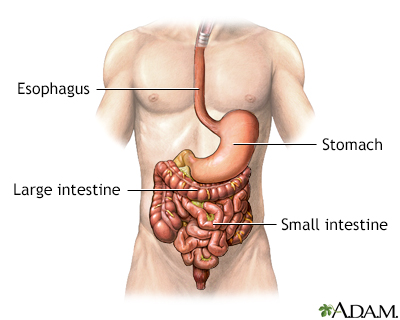
Normal anatomy
The gastrointestinal tract starts at the mouth, which leads to the esophagus, stomach, small intestine, colon, and finally, the rectum and anus. The GI tract is a long, hollow, muscular tube through which food passes, nutrients are absorbed, and wastes are eliminated.
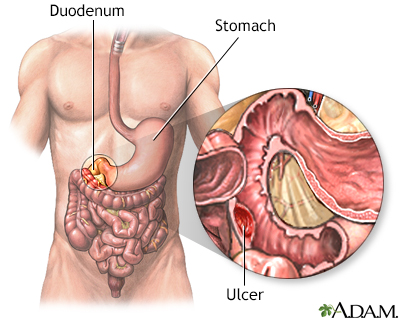
Indication
Bleeding from the GI tract is a common medical problem. Patients usually notice either dark red blood or bright red blood in their stool.
Ulcers of the stomach and duodenum are common causes of bleeding from the upper GI tract. Bleeding can also occur in the lower GI tract (colon). Diverticular bleeding is a common cause of lower GI bleeding.
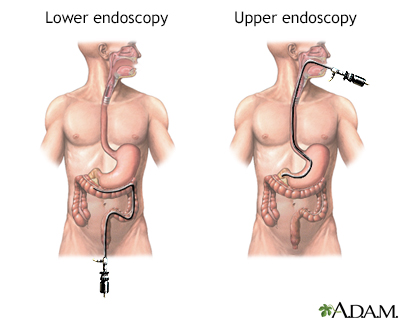
Procedure, part 1
The first step in the treatment of GI bleeding is to locate the source of the bleeding. Patients who have lost significant amounts of blood are transfused with blood.
Next, an endoscopy is used to locate the source of the bleeding. Upper endoscopy is generally performed first, and if no bleeding source is located, then lower endoscopy is performed. During an endoscopy, the patient is usually sedated but awake.
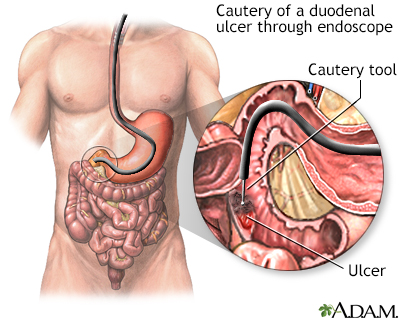
Procedure, part 2
In many cases, GI bleeding will stop on its own, with no treatment. In other cases, treatment can be provided with the endoscope, most often in the form of cautery (electrocoagulation) of the site of bleeding.
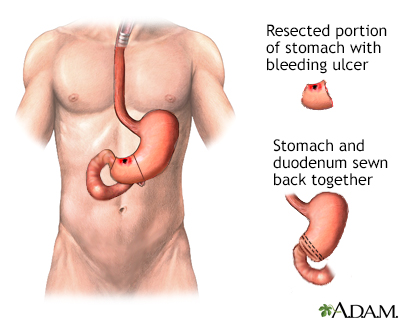
Procedure, part 3
If the bleeding cannot be stopped using the endoscope, surgery may be required. The bleeding segment of intestine or stomach is removed. However, most cases of GI bleeding are managed successfully with endsocopy.
BACK TO TOP
Review Date: 1/30/2023
Reviewed By: Michael M. Phillips, MD, Emeritus Professor of Medicine, The George Washington University School of Medicine, Washington, DC. Also reviewed by David C. Dugdale, MD, Medical Director, Brenda Conaway, Editorial Director, and the A.D.A.M. Editorial team.

Health Content Provider
06/01/2025
|
A.D.A.M., Inc. is accredited by URAC, for Health Content Provider (www.urac.org). URAC's accreditation program is an independent audit to verify that A.D.A.M. follows rigorous standards of quality and accountability. A.D.A.M. is among the first to achieve this important distinction for online health information and services. Learn more about A.D.A.M.'s editorial policy, editorial process and privacy policy. A.D.A.M. is also a founding member of Hi-Ethics. This site complied with the HONcode standard for trustworthy health information from 1995 to 2022, after which HON (Health On the Net, a not-for-profit organization that promoted transparent and reliable health information online) was discontinued. |
The information provided herein should not be used during any medical emergency or for the diagnosis or treatment of any medical condition. A licensed medical professional should be consulted for diagnosis and treatment of any and all medical conditions. Links to other sites are provided for information only -- they do not constitute endorsements of those other sites. © 1997- 2025 A.D.A.M., a business unit of Ebix, Inc. Any duplication or distribution of the information contained herein is strictly prohibited.
